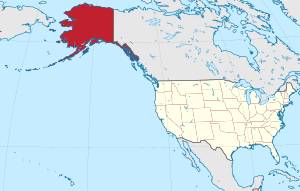In the annals of history, there are deals, and then there are *deals*. The purchase of Alaska by the United States from Russia in 1867 falls squarely into the latter category. It's a tale that would make even the savviest bargain hunters weak at the knees – a vast, resource-rich land bought for a mere pittance. Let's dive into this fascinating story of how America acquired its "Last Frontier" and why it might just be the greatest real estate deal ever made.
Picture this: It's the mid-1800s, and Russia is feeling the pinch. They've just lost the Crimean War, their coffers are running dry, and they're stuck with this enormous, frozen chunk of land across the Bering Strait. Alaska, as we know it today, was Russia's problem child – difficult to defend, expensive to maintain, and seemingly of little value beyond some furry creatures that were rapidly disappearing.
Enter the United States, a young nation with a growing appetite for expansion. The Americans had already stretched from coast to coast, gobbling up the Louisiana Purchase along the way. So when Russia dangled Alaska in front of them, it was like offering a kid in a candy store one more lollipop – irresistible.
But let's rewind a bit. How did Russia end up with Alaska in the first place? It all started with a fellow named Vitus Bering (yes, *that* Bering) who landed in Alaska in 1741 on orders from Tsar Peter the Great. The Russians were after one thing: fur. Lots and lots of fur. Alaska was a trapper's paradise, teeming with bears, wolves, foxes, and the coveted sea otter.
For over a century, Russian fur traders braved the treacherous Bering Strait to hunt these animals. But by the 1850s, the fur trade was dwindling, and Russia found itself with a vast, cold territory that was more trouble than it was worth. Fearing that their arch-rival Britain (which owned neighbouring Canada) might snatch it up, they decided to offload it to the Americans.
Negotiations began in 1860, but were interrupted by a little event called the American Civil War. Once the dust settled, talks resumed, and in March 1867, after a long night of haggling (and possibly a few vodkas), a deal was struck. The price? A mere $7.2 million – about $140 million in today's money. To put that in perspective, it's less than the cost of a decent Manhattan penthouse.
At the time, many Americans thought it was a foolish purchase. They dubbed it "Seward's Folly" after Secretary of State William Seward, who negotiated the deal. Little did they know that this "folly" would turn out to be one of the shrewdest investments in history.
The first hint that Alaska might be more than just a frozen wasteland came with the Klondike Gold Rush of 1896. Although the gold was in Canada, the rush brought prosperity to Alaskan ports. Then, in 1899, gold was discovered on the beaches of Nome, Alaska. Suddenly, people were literally picking up gold off the ground. The tiny town of Nome swelled from a population of 250 to over 20,000 in just a few years.
But gold was just the beginning. As the 20th century rolled in, Alaska proved its worth in ways that went beyond mere dollars and cents. During World War II, the Aleutian Islands off Alaska's coast became crucial military bases, providing strategic access to the Pacific. Alaska also served as a vital link in supplying aircraft to the Soviet Union in their fight against Nazi Germany.
Then came the oil. In the 1960s, the discovery of the Prudhoe Bay Oil Field turned Alaska into an energy powerhouse. This field, the largest in North America, was estimated to contain a staggering 10 billion barrels of oil and 26 trillion cubic feet of natural gas. Suddenly, that $7.2 million price tag was looking like loose change found between couch cushions.
Today, Alaska's GDP stands at over $57 billion. In other words, the state earns back its purchase price about every hour. It's now the fourth wealthiest state per capita in the US, and residents even receive an annual dividend from oil profits. Not bad for a "folly," eh?
But Alaska's value isn't just about money. It's a land of breath-taking beauty, with vast wilderness, towering mountains, and abundant wildlife. Those sea otters that were nearly hunted to extinction? They're back, swimming happily in Alaskan waters.
So, was the Alaska Purchase a good deal? You bet your fur hat it was. It's the kind of deal that makes you wonder what might have been if Russia had held onto it. Would there be a Russian enclave bordering Canada today? Would half of America be named after Vitus Bering?
We'll never know. But one thing's for sure – when the United States signed on the dotted line back in 1867, they weren't just buying land. They were investing in a future that would pay dividends for generations to come. From gold rushes to oil booms, from military strategy to natural beauty, Alaska has proven to be more than just a great deal – it's been a great addition to the American story.
So the next time you find a great bargain, remember the Alaska Purchase. Because while your half-price doughnuts might be exciting, they've got nothing on the greatest deal in history – a deal that turned a "frozen wasteland" into the Last Frontier.


